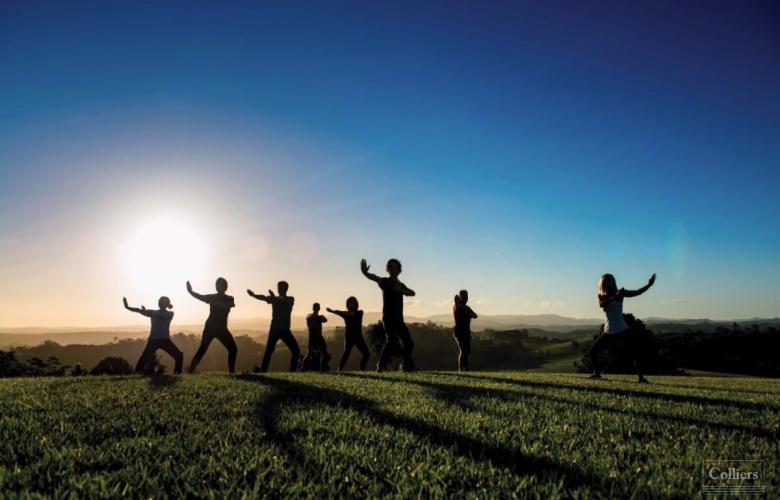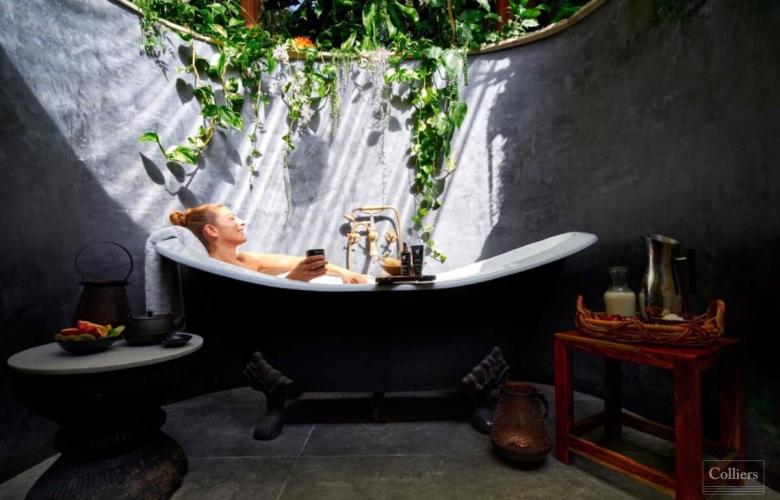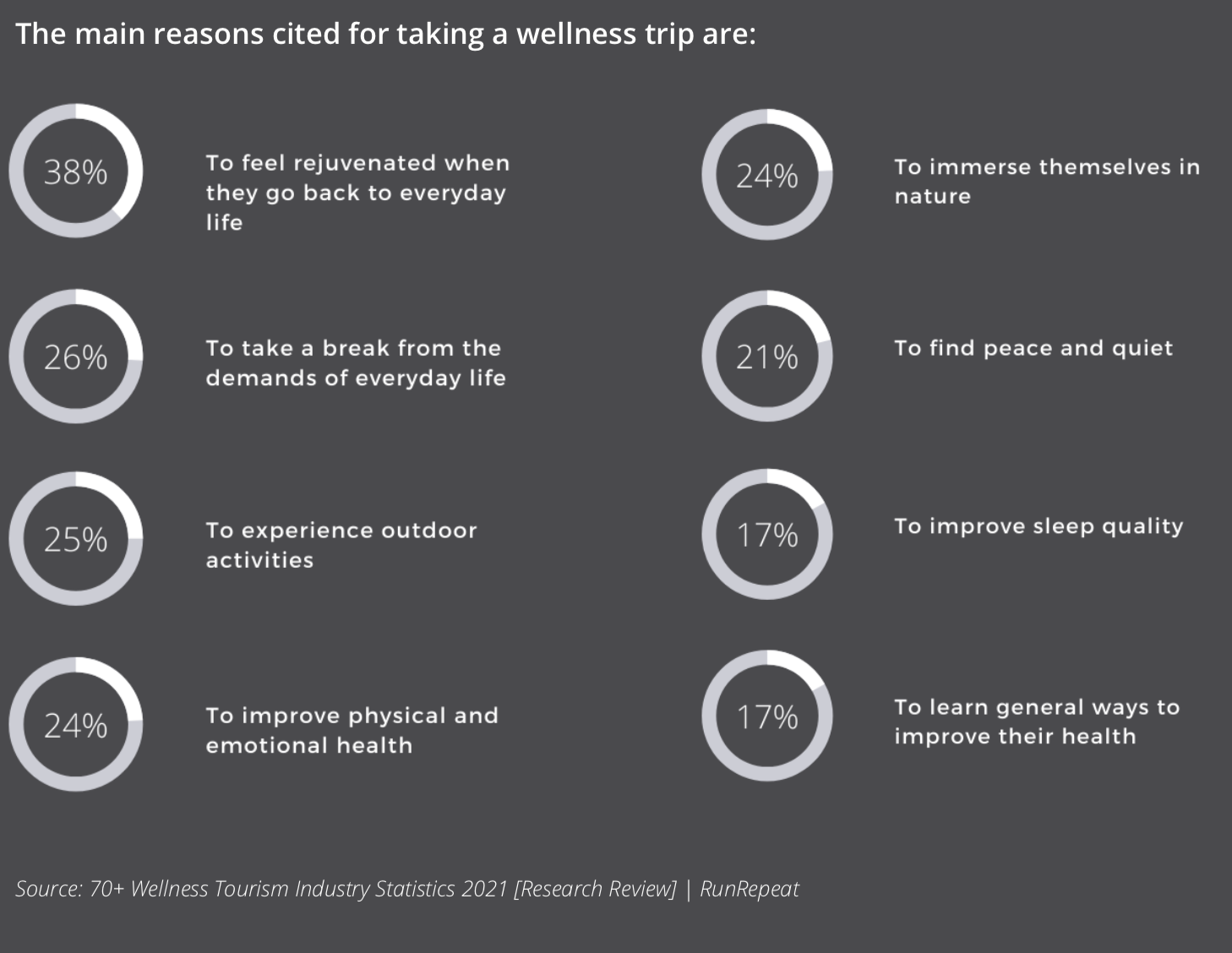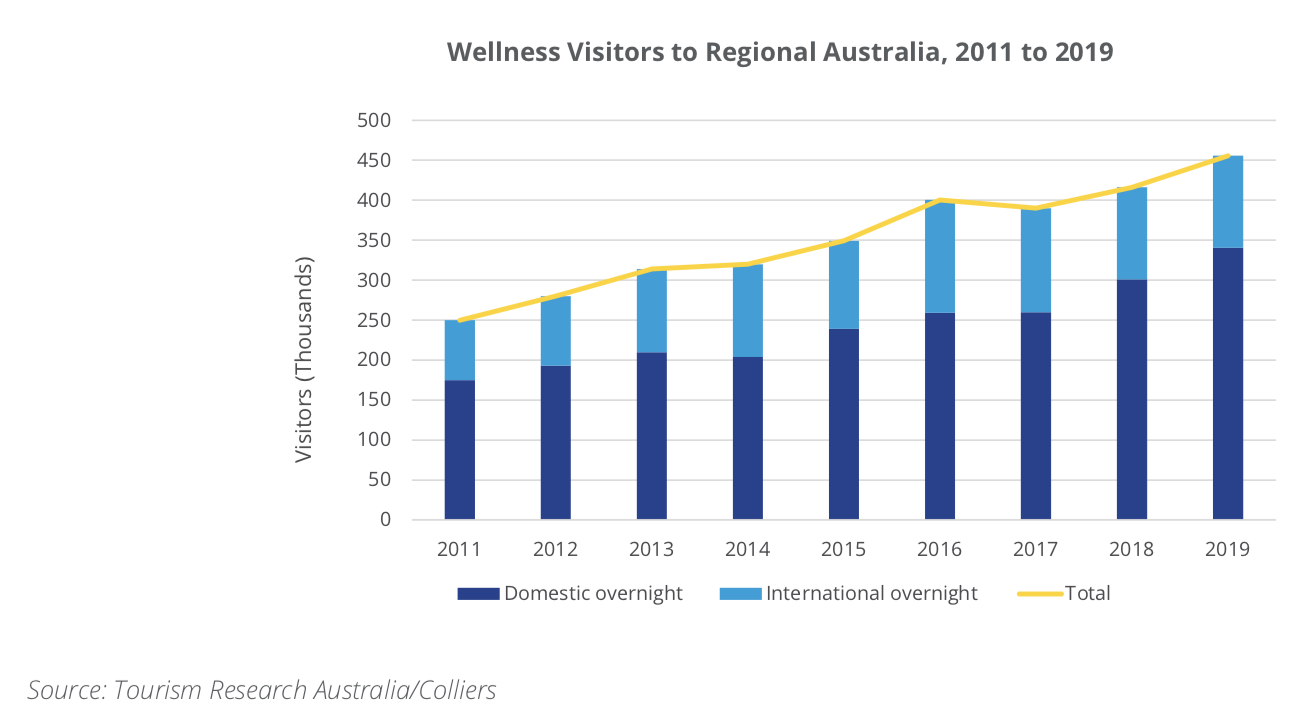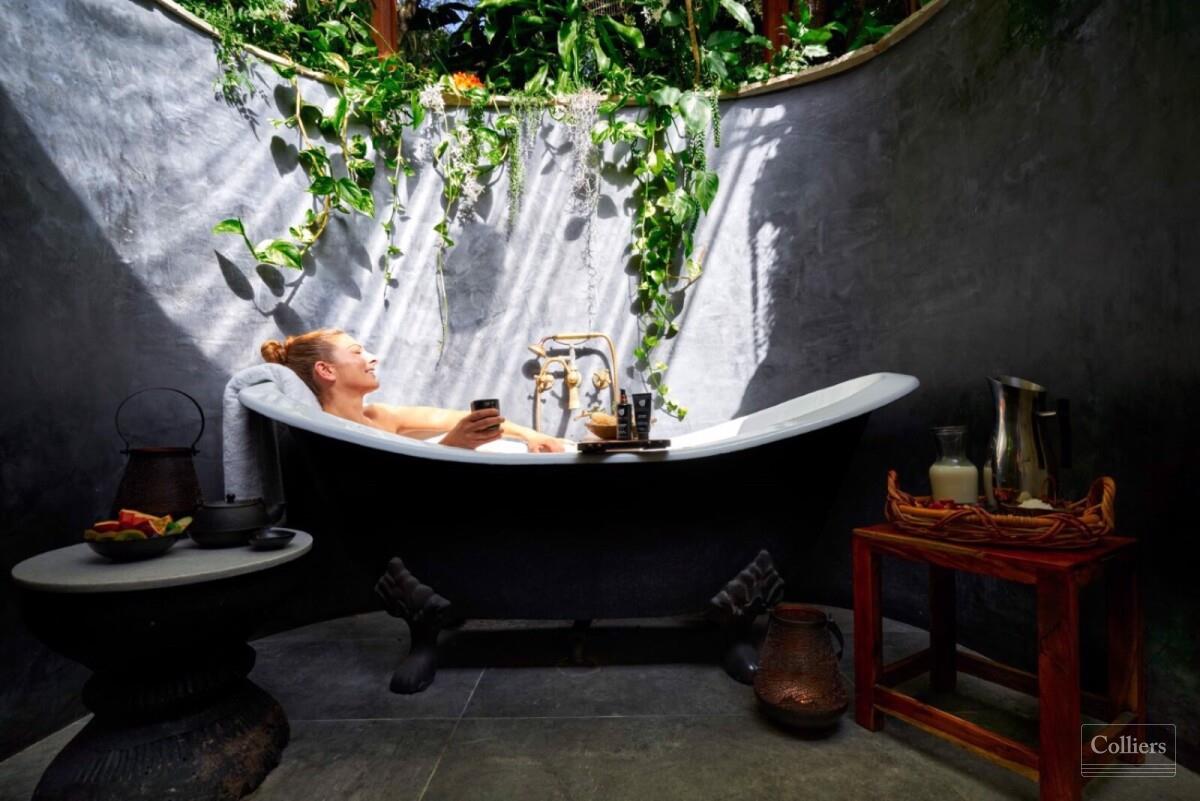How Covid-19 has transformed the wellness industry and the boom in spiritual tourism - Colliers
Contact
How Covid-19 has transformed the wellness industry and the boom in spiritual tourism - Colliers
As outlined in Colliers’ Wellness Tourism Research Report 2021, wellness tourism refers to three broad categories: beauty, lifestyle and spiritual. Colliers’ National Director Asia Pacific Hotels Transaction Services, Karen Wales explains. “People are pursuing wellness tourism activities for their mental health during furlough, searching for new ways to be well.”
The growing demand for wellness services and related tourism has moved beyond the fixation with appearance and beauty related programs. The Covid-19 pandemic has placed a magnifying glass on people’s priorities and daily experiences. The need to escape from the increasing fast pace of everyday life is driving growth in a new type of wellness tourism.
“Throughout the lockdowns and extended periods homebound, people have developed their own wellness programs at home, from gardening and exercise to meditation and mindfulness,” Colliers’ National Director Asia Pacific Hotels Transaction Services, Karen Wales explains. “People are pursuing wellness tourism activities for their mental health during furlough, searching for new ways to be well, and reflecting on ‘new’ meaning after job losses and periods away from the office. This shift in priorities will drive a boom, not just in lifestyle tourism, but what we call ‘spiritual tourism’.”
As outlined in Colliers’ Wellness Tourism Research Report 2021, wellness tourism refers to three broad categories: beauty, lifestyle and spiritual. Lifestyle, and especially spiritual tourism, are the areas Colliers predicts will experience the greatest growth and are the tourism sectors where significant opportunities lie for operators.
“Lifestyle tourism focusses on activities like detoxing, rejuvenation and changing behaviours, while spiritual tourism places emphasis on contemplation, meditation and learning. We predict a fundamental shift towards these types of wellness tourism as people place greater value on their mental health and wellbeing and have identified prevention is far better than a cure,” Ms Wales says.
The growth in the wellness travel sector represents an attractive investment proposition in Australia, in terms of global figures, the wellness tourism industry was valued at $735.8 billion in 2020, which was a growth of 15.1% from $639 billion in 2017. By 2022, according to the Wellness Tourism Industry Statistics 2021, the global wellness tourism market is predicted to reach $919 billion with a projected value of $1.2 trillion by 2027.
“International wellness tourism is expected to grow 12% annually over the next seven years,” Ms Wales says. “Australia is clearly well placed to benefit from this significant influx of international wellness tourists as borders reopen.”
And it is not just international wellness tourists Australia will welcome, domestic wellness tourism is expected to grow significantly around the globe too, predicted to reach $779.1 billion by 2027. Analysis has shown, while international wellness tourists spend roughly 53% more than the average international traveller, domestic wellness tourists spend a whopping 178% more than non-wellness tourists.
“Wellness resorts are fundamentally different to leisure resorts. In a wellness resort guests generally pay for program packages rather than just a room, this results in a higher average length of stay. In addition to staying longer, wellness tourists spend much more of their time within the resort participating in activities, giving greater opportunities for maximising revenues,” Ms Wales says.
Other key benefits of wellness resorts include less reliance on seasonal weather patterns as the tourist is there for a distinct program or experience. Location has also been shown to be less of a driver for wellness tourists and repeat business is much higher, which is estimated to be around 30% -55%.
Investor appetite for regional properties and resorts that can cater to wellness tourism is significant in Australia, this was reflected in the overwhelming response to the recent Gaia Retreat & Spa, Byron Bay, campaign managed by Ms Wales and Colliers’ Head of Hotels, Gus Moors. Gaia is considered a global leader in personalised health and wellbeing and has been a regular recipient of international hotel and spa awards. Last month Gaia sold to Tattarang, one of Australia’s largest private investment groups and is owned by the Forrest family.
“The interest in Gaia was widespread, with inspections conducted by high-net-worth individuals (HNWIs), owner operator groups, fund managers and developers. Groups from Asia, Europe and the United States all enquired, whilst domestic groups dominated owing to closed international borders,” Ms Wales explains. “There is little doubt post Covid, a boom is coming to the wellness tourism sector, and Australia with its unique and vast natural landscapes, pristine environments and one of the world’s most ancient living cultures, is attracting significant local and international interest as a wellness tourism destination.”
Another key factor in wellness tourism investment is the inherent focus on sustainable operations - wellness for both humanity and the planet. Wellness resorts look to reduce their operational footprints through energy efficiency, sustainable building practices and responsible water and waste management.
“The idea of sustainability is that the materials used in wellness facilities and buildings should feel good and come from local resources if possible. They should also be produced in an environmentally friendly manner and be beneficial to health,” Ms Wales says. “These attributes attract a wide range of investors who look to secure net zero operations. Many clients pursue investments that will assist in their ranking on the Global Real Estate Sustainability Benchmark Survey (GRESB).”
The GRESB Real Estate Assessment is the investor-driven global ESG benchmark and reporting framework for listed property companies, private property funds, developers and investors that invest directly in real estate.
Click here to view and download the report.
Similar to this:
Spicers Luxury is green not gold
Baillie Silky Oaks Lodge $15m works commence reopening date confirmed

